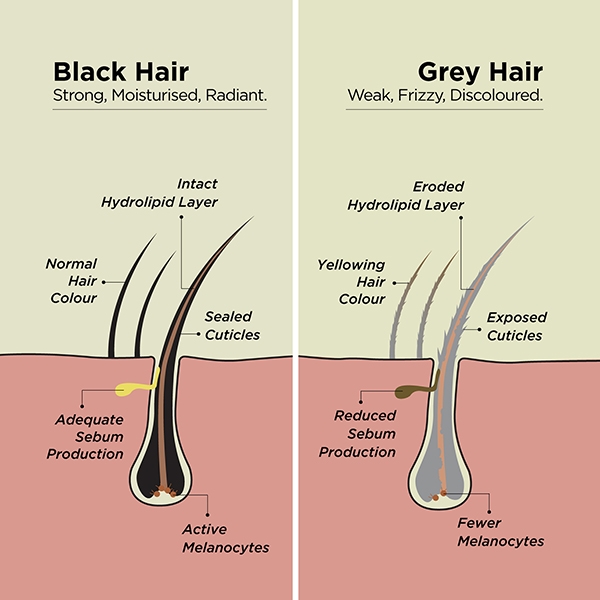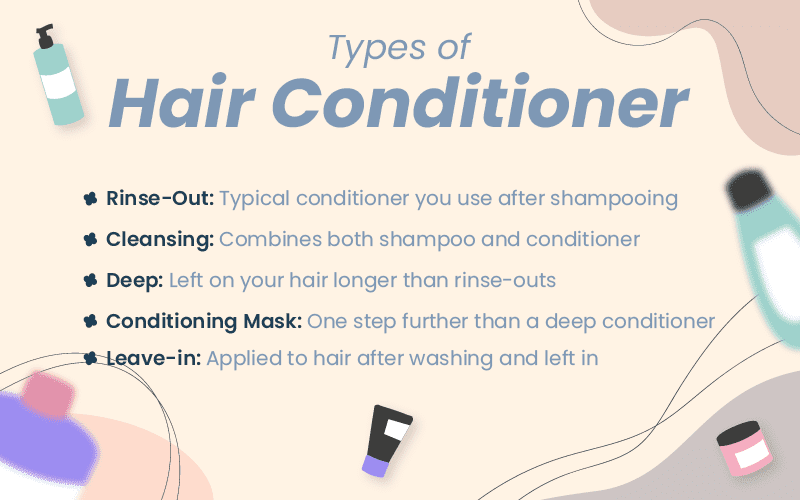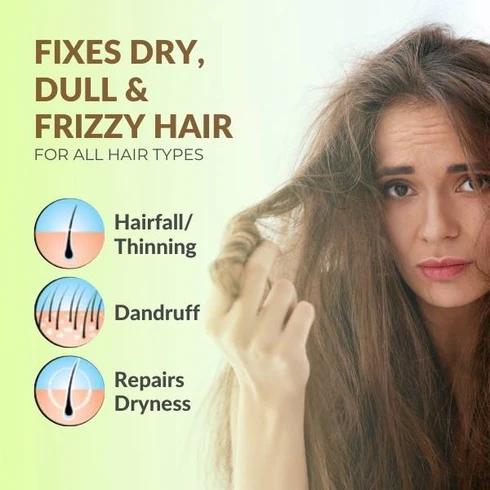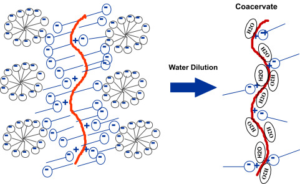Table of Contents:
- Introduction
- The Role of Hair Conditioners
- Unraveling the Science
- Understanding Hair Structure: The Foundation of Conditioning
- The Composition of Hair
- The Cuticle Layer and Its Importance
- Basic Composition of Hair Conditioners
- Cationic Surfactants: Interaction with Hair Fibers
- Silicones: Creating a Protective Coating
- Emollients: Nourishing and Softening
- pH-Balancing Agents: Maintaining Optimal pH
- Specialty Ingredients: Addressing Specific Concerns
- The Chemistry Behind Application
- Creating a Bond with Wet Hair
- Massaging for Effective Penetration
- Rinsing: Striking the Balance
- Removing Excess Residue
- Retaining Essential Components
- Conclusion: Science for Beautiful Hair
- Harnessing the Chemistry for Gorgeous Locks
- Making Informed Choices for Hair Care
Introduction:
The chemistry behind hair conditioners that provide smooth and silky hair is a fascinating blend of scientific principles and cosmetic innovation. Hair conditioners are designed to improve the texture and appearance of hair by addressing various issues such as dryness, frizz, and damage. To achieve these desirable effects, conditioners utilize a range of chemical compounds and ingredients, each with a specific role in hair care.
The Role of Hair Conditioners:
Hair conditioners are formulated to improve the appearance, feel, and health of hair by addressing a range of common concerns, such as dryness, frizz, and brittleness. They work by adding a layer of protective substances to the hair shaft, which can help repair damage, enhance shine, and reduce tangling. Hair conditioners also play a significant role in restoring moisture to the hair, especially after the cleansing process, which can strip the hair of its natural oils.
Unraveling the Science:
To understand how hair conditioners work, we need to take a closer look at the structure of hair itself. Hair is composed of three layers: the cuticle, cortex, and medulla. The outermost layer, the cuticle, consists of overlapping flat cells that resemble roof shingles. These cells are responsible for protecting the inner layers of the hair and contributing to its overall appearance.

When hair is exposed to external factors such as heat styling, environmental pollutants, and harsh chemicals, the cuticle layer can become damaged. This damage can lead to various hair concerns, including frizz, split ends, and loss of shine. This is where hair conditioners come into play, utilizing a combination of ingredients to address these issues and improve the overall health and appearance of hair.
In the upcoming sections of this guide, we’ll delve deeper into the chemistry behind hair conditioners, exploring the various ingredients that contribute to their effectiveness. From cationic surfactants to emollients and specialty components, we’ll uncover how these ingredients interact with the hair’s structure and create the desirable effects that many of us seek. By understanding the science behind hair conditioners, you’ll be better equipped to choose the right product for your hair type and needs, and make informed decisions to achieve the hair you’ve always dreamed of. Stay tuned as we explore the intricacies of hair conditioner chemistry and its impact on our locks.
Understanding Hair Structure: The Foundation of Conditioning
The Composition of Hair:
Hair is mostly made of a protein called keratin, built from amino acids. These amino acids form long chains that shape the hair. Water, lipids, pigments, and minerals are also present in the hair, affecting its strength and look.

The Cuticle Layer and Its Importance:
The outer layer of hair is the cuticle. It looks like overlapping shingles on a roof. This layer protects the inner parts of hair from things like sunlight, heat, and chemicals. A healthy cuticle lies flat, making hair shiny and smooth.
Basic Composition of Hair Conditioner:
Hair conditioners are designed to improve the feel and appearance of hair. They achieve this through a combination of specific ingredients that work together to target different aspects of hair structure and health.

- Cationic Surfactants: Interaction with Hair Fibers:
- Cationic surfactants have a positive charge.
- They interact with the negatively charged hair fibers.
- This interaction forms a protective layer, reducing friction between hair strands.
- Helps in detangling and reducing static.
- Concentration: 1-5% in conditioners.
- Silicones: Creating a Protective Coating:
- Silicones create a smooth, protective layer around the hair shaft.
- Smooths down the hair cuticle, reducing friction.
- Enhances shine and reflects light.
- Seals in moisture, making hair softer and more manageable.
- Different types like dimethicone or cyclomethicone used.
- Concentration: 1-15% in conditioners.
- Emollients: Nourishing and Softening:
- Emollients are natural oils or fatty substances.
- They penetrate the hair shaft, providing moisture and nutrients.
- Fill gaps in the cuticle, making hair smoother and softer.
- Nourish and improve hair texture.
- Concentration: 1-10% in conditioners.
- pH-Balancing Agents: Maintaining Optimal pH:
- Hair’s optimal pH range is slightly acidic (4.5-5.5).
- pH-balancing agents maintain this acidity.
- Balanced pH keeps the cuticle flat for smoother, shinier hair.
- Supports overall hair and scalp health.
- Concentration: 0.5-2% in conditioners.
- Specialty Ingredients: Addressing Specific Concerns:
- Proteins strengthen damaged hair by binding to the hair shaft.
- Plant extracts provide antioxidants and nutrients for hair health.
- Vitamins and minerals address specific deficiencies and promote vitality.
- Ingredients vary based on targeted hair concerns.
- Concentration varies depending on the ingredient’s purpose.

Understanding how these ingredients function in hair conditioners helps you make informed choices for your hair care routine. Each ingredient contributes uniquely to improving hair health, texture, and appearance. When combined effectively, they create a conditioner that addresses your specific hair needs and enhances your overall hair care experience.
The Chemistry Behind Application:
When applying hair conditioner, the goal is to maximize its benefits by ensuring proper distribution and interaction with the hair fibers. This process involves creating a bond with wet hair and facilitating effective penetration through massaging.
Creating a Bond with Wet Hair:
- Hair conditioners work best on wet hair due to the structural properties of hair.
- Wet hair’s cuticle layer is slightly raised, making it more receptive to conditioning agents.
- Water helps open up the hair’s cuticle, allowing the conditioner to penetrate.
- Applying conditioner on wet hair ensures even coverage and absorption.
Massaging for Effective Penetration:
- Massaging the conditioner onto the hair and scalp is crucial for optimal penetration.
- Gentle massaging helps distribute the product evenly and encourages it to adhere to the hair fibers.
- Finger movements stimulate blood circulation, promoting nutrient delivery to hair follicles.
- Massage also aids in detangling and relaxing the hair.
Key Points to Remember:
- Apply conditioner to wet hair after shampooing for best results.
- Gently squeeze out excess water before applying to ensure the conditioner isn’t diluted.
- Start applying conditioner from mid-length to the ends, where hair is usually drier and more damaged.
- Use a wide-tooth comb or your fingers to evenly distribute the conditioner.
- Massage the product into the hair and scalp using gentle, circular motions.
- Leave the conditioner on for the recommended time (usually a few minutes) to allow ingredients to work.
- Rinse thoroughly with cool water to close the cuticle, locking in the benefits of the conditioner.
By understanding the chemistry behind the application of hair conditioner, you can optimize its effects on your hair. The combination of wet hair, proper distribution, and effective massaging ensures that the conditioning agents interact with your hair fibers, providing the nourishment and benefits your hair needs for improved health and appearance.
Rinsing: Striking the Balance
- Rinsing hair after applying conditioner is a critical step to achieve the desired results.
- Rinsing is necessary to remove excess conditioner and prevent hair from becoming weighed down.
- However, thorough rinsing doesn’t mean stripping away all the beneficial components of the conditioner.
Removing Excess Residue:
- Over time, residue from conditioners, styling products, and environmental pollutants can accumulate on hair.
- Excessive residue can lead to dullness, flatness, and even scalp issues.
- Rinsing thoroughly with lukewarm water helps remove excess conditioner and accumulated residue.
Retaining Essential Components:
- While it’s important to remove excess residue, it’s equally crucial to retain the beneficial components of the conditioner.
- Many conditioners contain ingredients like silicones and emollients that create a protective coating and nourish the hair.
- Rinsing too vigorously or using very hot water can strip away these beneficial components, compromising the conditioning effects.
- Use lukewarm water to rinse hair after applying conditioner.
- Avoid using excessively hot water, as it can strip away beneficial components and cause dryness.
- Gently run your fingers or a wide-tooth comb through your hair while rinsing to help distribute the water and remove any excess conditioner.
- Focus on rinsing the hair lengths and ends thoroughly while avoiding direct pressure on the scalp.
- Pay attention to how your hair feels during rinsing – if it still feels slippery, it might indicate that some conditioner residue remains.
- Aim for a balance: remove excess residue while ensuring your hair still feels smooth and conditioned after rinsing.

By finding the right balance between removing excess residue and retaining essential conditioning components, you can ensure that your hair benefits from the nourishing effects of the conditioner without experiencing any drawbacks. Thorough but gentle rinsing helps maintain the health, appearance, and manageability of your hair.
Conclusion: Science for Beautiful Hair
In the world of hair care, science plays a pivotal role in unraveling the mysteries of our locks and guiding us towards healthier, more beautiful hair. From understanding the intricate composition of our hair strands to delving into the formulations of shampoos and conditioners, the journey of hair care is enriched by the knowledge of chemistry.
By recognizing the significance of pH balance, the power of surfactants, and the benefits of specialized ingredients, we’re empowered to choose products that align with our unique hair types and concerns. The bond between science and beauty is evident as we learn how cationic surfactants interact with hair fibers, how silicones form a protective shield, and how emollients nourish and soften our locks.
From the moment we apply shampoo to the final rinse of conditioner, the chemistry behind our hair care routine is a symphony of precise interactions aimed at achieving hair that’s not only visually stunning but also healthy and resilient. Each choice we make, whether it’s selecting a sulfate-free formula, opting for a pH-balanced product, or indulging in targeted treatments, contributes to the harmony of our hair’s journey.
As we embrace the chemistry behind hair care, we make informed decisions that pave the way for gorgeous locks. The union of science and self-care results in a transformative experience, where our hair becomes a canvas for nurturing, nourishing, and enhancing its natural beauty. With every lather, every rinse, and every styling session, we witness the fusion of science and artistry, creating a symphony of beauty that resonates with confidence, vitality, and radiance.
So, embark on this journey armed with the knowledge of hair care chemistry, and let your locks reflect not just your style, but also your understanding of the intricate science that transforms them into the crowning glory you’ve always desired.







